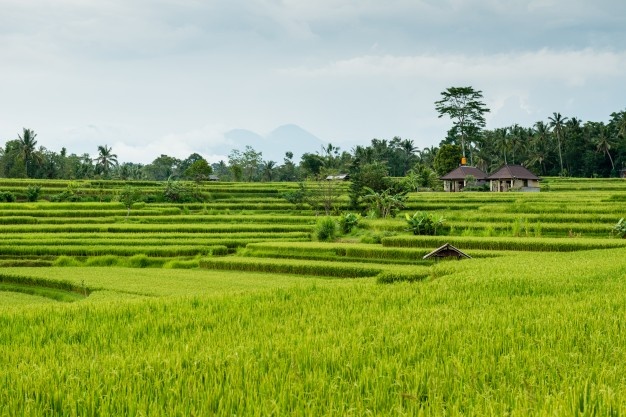Table of Contents
- Indian Basmati Rice – Long Grains
- A Grain: Largely Comes From Punjab:
- Varieties Of Basmati Rice Grows In India
- What Should Be The Best Choice:
- To Conclude:
Indian basmati rice often has its place in the majority of cuisines, not only in India but throughout the world. It appeals to many consumers and is widely being exported by the basmati rice exporters of India. The question comes in mind how many varieties of basmati rice grows in India.
Many nutritionists and dieticians have suggested this grain for many beneficial aspects. It is very popular in Western countries. Total 80% of Indian rice production is destined for Europe and the Middle East.
Indian states grew many varieties of rice that were further exported by rice exporters and suppliers.
Indian Basmati Rice – Long Grains
Basmati rice is a distinct variety from other variants only by the appearance of the grain. And, the additional part is about its texture.
Each grain is dissociated from the other. And, if we talk about the flavor, it can be easily recognized because it has a different and unique fragrance. In fact, the grain refers to the king of the variety.
In several countries, it is served as an accompaniment to meat or other cereals. It largely compliments Indian dishes with a distinct aroma.
A Grain: Largely Comes From Punjab:
Between the borderline of India and Pakistan, Basmati rice is grown viciously in the state Punjab as the prominent crop. All over the world, rice is considered as the second most widely cultivated food grain.
It is full of fragrance, nutrients and has an amazing texture. As of now, one-fourth of the globe consumes rice and it is being the favorite cuisine of every kitchen.
Varieties Of Basmati Rice Grows In India
According to the reports, 70 percent of the total varieties that are worldwide consumed, grow specifically in India.
There are over 29 varieties that are being verified or identified, as per the Seeds Act of 1996. Each of the varieties is unique and consists of individual properties. Also, the flavor, texture and fragrance are distinctive with each other.
The list of prominent types of Indian basmati rice along with the features it is hereby;
- 1121 PUSA Basmati Rice – This variant of basmati rice has long-tip, which appears as pointed. It is also known as Muchal Basmati, it is slightly slender in shape. The Pusa variety is mostly used for dishes such as Pilaf and Biryani. It is a widely used variety all over the world.
- Pusa – 1 Basmati – This type has extra long rice grains which accompany a pleasurable aroma. After being cooked, it is observed that the grain volume expands to four times from its normal. It is a preferable grain for easy digestibility.
- Ranbir Basmati Rice – It is a variety that has been traced long before. It is consumable widely in Jammu & Kashmir, also in Dehradun states. The grain has an exceptional aroma which is favored by the locals of the state to a great extent. Ranbir basmati rice is popularized amongst the local people.
- 386 Basmati Rice – While being cooked, the grain size is perfectly lengthy. It is considerably the premium variety of Indian basmati rice.
- Sugandha Basmati Rice – It is the variety that is highly aromatic and flavorful. The grain size is recorded at about 7.90mm after being cooked finely. The variety is widely supplied by the rice suppliers of India. Moreover, it accounts for high nutritional values.
- Golden Sella Basmati – It is the variety that is known as the basmati parboiled rice. This rice is cooked in such a way that ensures not to reduce any of the nutrients. After the process, rice turns into a golden color and is named as Golden Sella.
Above stated are major and most prominent varieties of Basmati rice that are cultivated by the rice miller. This is the staple crop which is cherished by almost everyone. It is often featured in many cuisines.
What Should Be The Best Choice:
Keeping in mind the researches, it is being said that choosing a rice in Indian region, based basically on two factors such:
- People look at the physical appearance of the grain to decide whether they should buy.
- The second factor is to see how repleting it is to the palate.
And, Basmati rice successfully completes both the factors. This grain holds the popularity in the globe because of the texture and the aroma. It is not as difficult as it looks, to choose the best variety.
Make it simple, and determine the best variety by differentiating the below factors:
- Aroma – It is the basic key factor that must be in mind while buying. If the grain is pleasant, aromatic, and floral fragrant, then you are good to go.
- Texture – Those rice grains, which are delicate to touch, and look non-sticky, are a good variety. Each grain looks separated from each other. You have got the best rice.
- Taste – If the grain looks soft and fluffy after being cooked, you have chosen the best grain.
To Conclude:
Indian basmati rice is counted in royal dishes. It is highly in demand by other countries and consumed on a daily basis in India as well. The rice has gained auspicious values also.
India is considered as the second largest country which exports basmati rice through the Basmati rice exporters. It fulfills the nutritional values of the human body. Even if we consume it daily in a balanced diet, it has no negative impacts as of now.
